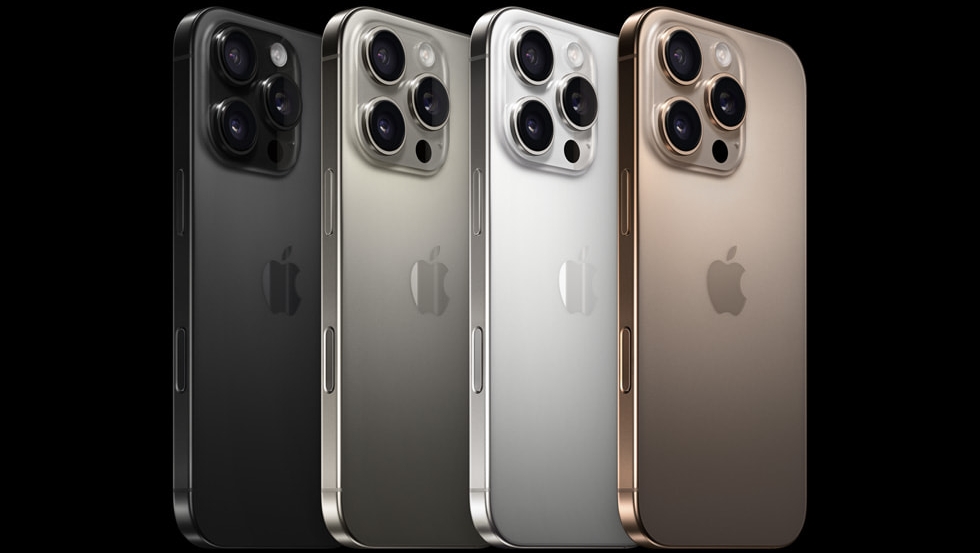The iPhone 16 family brings A18 and A18 Pro chipsets, with a serious boost to processing power
The world’s first 3nm smartphone chipsets boast some major performance gains

It’s official: the iPhone 16, iPhone 16 Plus, iPhone 16 Pro, and iPhone 16 Pro Max have arrived, and with them the next generation of Apple smartphone chips – the A18 and A18 Pro.
The new iPhone 16 lineup and A18 series chipsets were revealed at Apple's September 9 'It's Glowtime' event.
You’ll find the A18 in the iPhone 16 and iPhone 16 Plus, and the A18 Pro in the newly enlarged iPhone 16 Pro and iPhone 16 Pro Max
Apple claims you’ll see serious performance gains with these new chips, but in typical fashion hasn’t provided any concrete benchmarks, only percentage improvements compared to the previous generation.
For reference, when we say “previous generation”, we’re referring to the A16 Bionic chip found in the iPhone 15 and iPhone 15 Plus, and the A17 Pro chip found in the iPhone 15 Pro and iPhone 15 Pro Max.
Until we get our hands on the iPhone 16 lineup ourselves for testing, these claims from Apple are the best indication we have of the performance of these new chipsets.
A18 specs and performance improvements
The A18 chip found in the iPhone 16 and iPhone 16 Plus come equipped with a 6-core CPU, 5-core GPU (which Apple dubiously calls “desktop class”), and 16-core Neural Engine optimized for large generative models.
Sign up for breaking news, reviews, opinion, top tech deals, and more.
The CPU is split into two performance cores for heavier tasks, and four efficiency cores for lighter ones. Apple claims this CPU is 30% faster than the one found in the iPhone 15 and iPhone 15 Plus.
Apple says A18 achieves the same performance as the previous generation while using 30% less power.
Apple makes bolder statements about the GPU, claiming a performance improvement of 40% compared to the previous generation, with native support for hardware-accelerated ray tracing – a way of realistically rendering light that's increasingly used in modern games.
Apple says the A18’s GPU achieves the same performance as the previous generation while using 35% less power.
The entire chipset has 17% more memory bandwidth compared to the A16 Bionic – this is how much data the system can process at once, though Apple hasn't provided specific figures.
A18 Pro specs and performance improvements
Apple claims more modest improvements for the A18 Pro as compared to the A17 Pro, but this isn’t surprising given the already fantastic performance of the iPhone 15 Pro and iPhone 15 Pro Max.
The company did, however, call the A18’s CPU the “fastest CPU in any smartphone” during the now-concluded 'It’s Glowtime' event.
The A18 Pro’s 6-core CPU is divided into two performance cores and four efficiency cores, with Apple claiming a 15% improvement in performance compared to the previous generation.
The company says the A18 Pro achieves the same performance as the previous generation while using 20% less power.
Apple says the A18 Pro’s 6-core GPU – that’s one more core than the A18 – boasts a 20% performance boost over the A17 Pro.
Apple showed Death Stranding as an example of the type of games the A18 Pro can handle. The Kojima Productions game was first released on home consoles in 2019.
Like the A18, the A18 Pro comes equipped with a 16-core Neural Engine, but also includes what Apple calls “next-generation machine learning accelerators”, ostensibly to improve AI performance. And, as with the A18, memory bandwidth is improved by 17%.
The A18 Pro comes with two extra sweeteners for pro users: Apple claims doubled video encoding speeds and faster USB 3 data transfer speeds, though this is as much detail as we were given during the event.
The first 3nm smartphone chips
Apple says the A18 and A18 Pro are the world’s first 3nm smartphone chipsets. In chip production, nanometers (nm) refers to the microscopic width of a single transistor on a chip, processor, or SoC. Each transistor can store one bit of information, so the more you can cram onto a surface, the more operations a chipset can complete.
We’ll have to check for ourselves whether Apple’s implementation of 3nm technology has generated any tangible benefits, but it’s an impressive first either way, and will most likely spur on other manufacturers to adopt 3nm over the coming year.

Jamie is a Mobile Computing Staff Writer for TechRadar, responsible for covering phones and tablets. A lifelong tech-obsessive, Jamie began his writing career as a music blogger before studying journalism at Goldsmiths College, and joined TechRadar in 2024. He thinks the iPhone 5S is the greatest phone of all time, but is currently an Android user.
As well as reporting on the latest in mobile hardware, software, and industry developments, Jamie specialises in features and long-form pieces that dive into the latest phone and tablet trends. He can also be found writing for the site's Audio and Streaming sections from time to time, or behind the decks as a DJ at local venues around London.